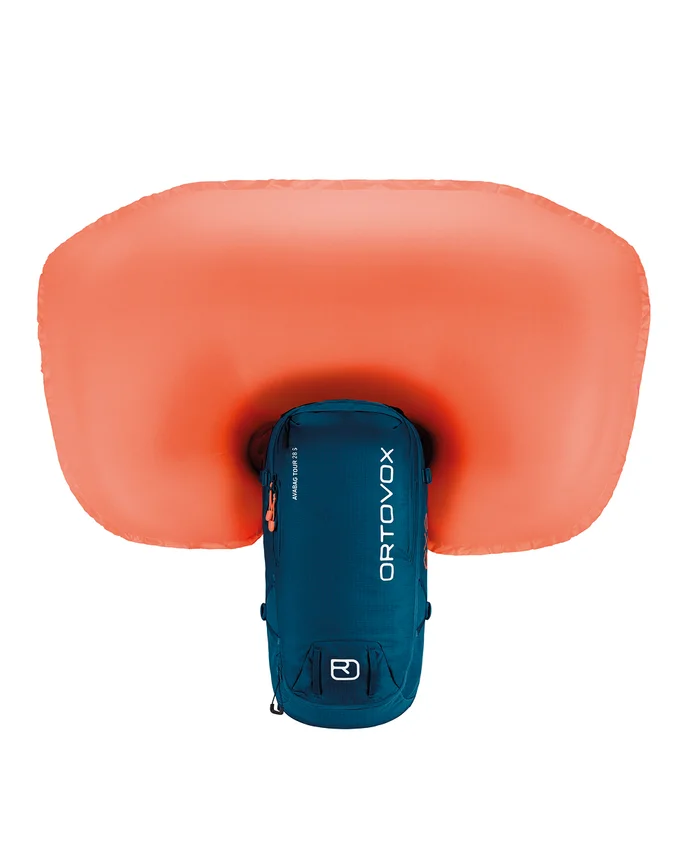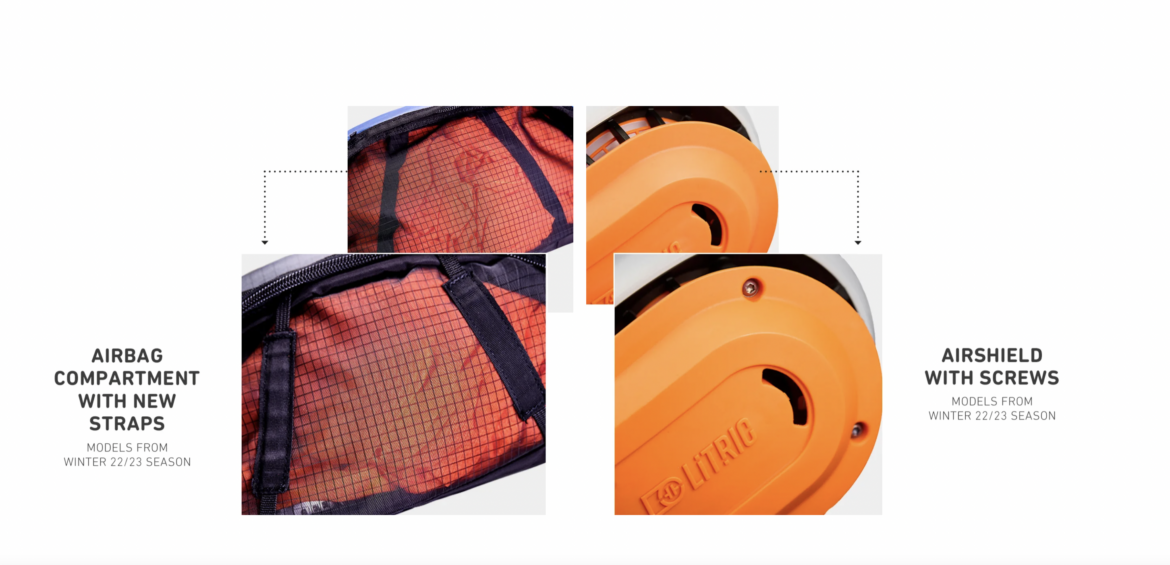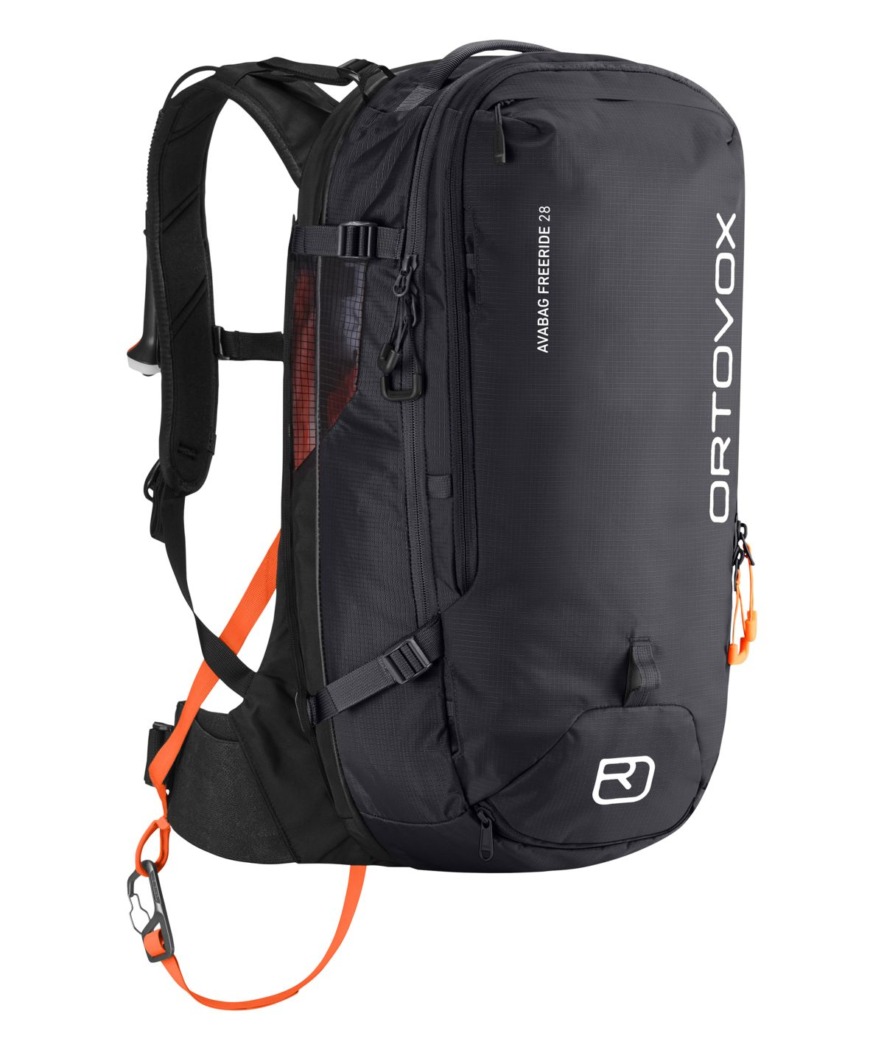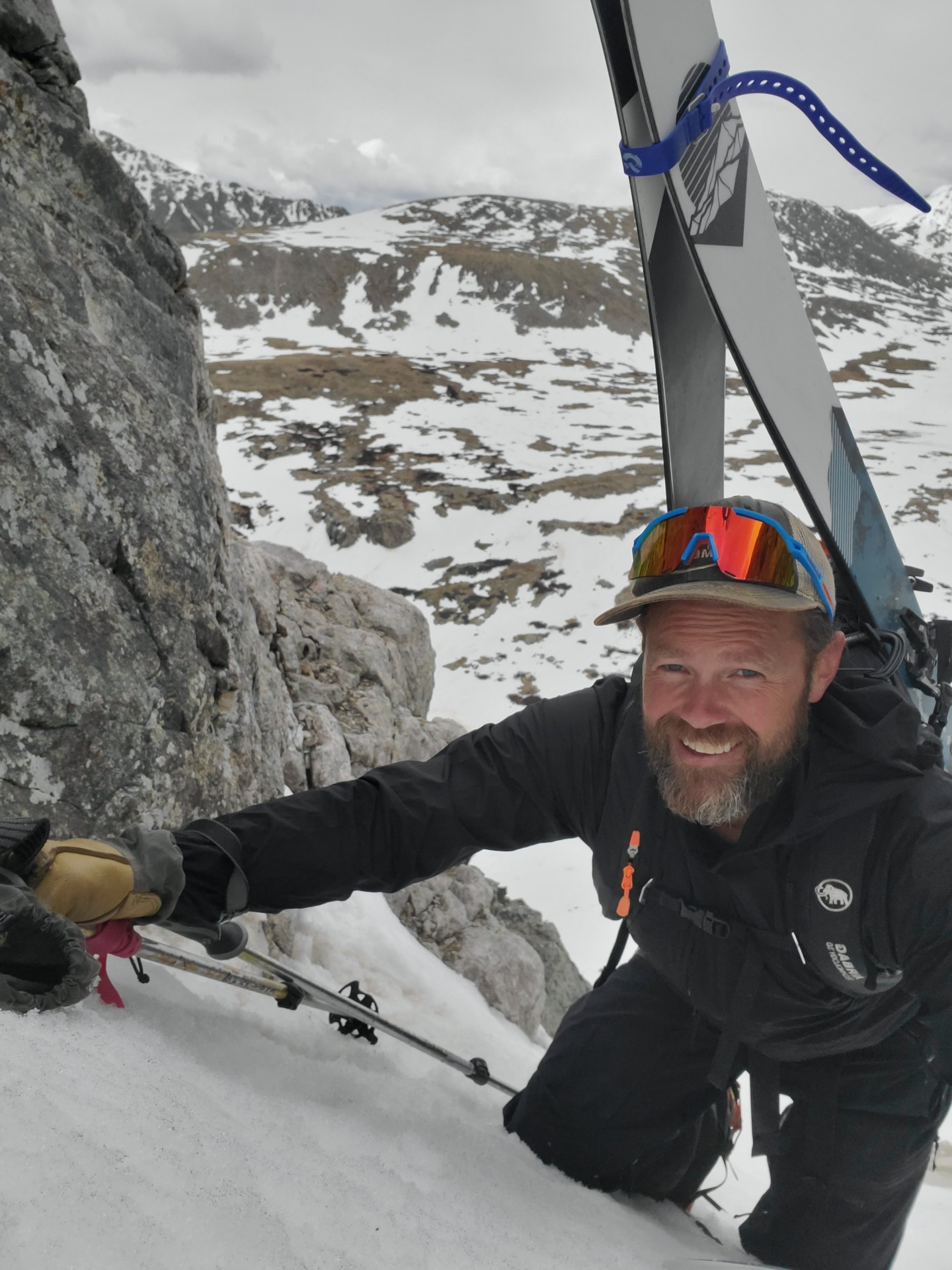
Avalanche airbag packs featuring the LiTRIC electronic deployment system co-developed by Arc’teryx and Ortovox are finally available in the US for this winter. The electronic airbag inflation system is much lighter and takes up less pack volume than canister-driven airbag systems and the LiTRIC system also has a battery backup that allows for multiple inflations.
The innovative system generated a lot of excitement when the collaboration was announced in 2022 and Ortovox released the first version of their pack in Europe last winter, but some design flaws revealed by more widespread public use led to a voluntary recall of those European-release packs.
(Arc’teryx has their own pack using the LiTRIC system, the Arc’teryx Micon, but it is only available for testing for a group of professionals this season and a release date hasn’t been announced.)
Germany’s Ortovox released their LiTRIC packs stateside on Oct. 5 this fall with some minor but important tweaks and we spoke with them about the issues with version 1 and how they addressed them in the redesigned packs.
Recall and Redesign
The highly anticipated packs were released publicly in Europe last season and Wild Snow reviewed a unit in depth and while we were impressed with the operation, the light weight, and reduced pack volume, our writer noted only time would tell how the packs hold up long-term.
Time told of a few issues and while they were edge cases, some pack users broke the intake cover or “Airshield” that allows the battery-powered supercapacitor to pull air into the airbag when the trigger is pulled. According to Ortovox Product Designer Patrick Wesch, “the consequence of the Airshield breaking off was a little plastic part inside would break loose, getting trapped inside the air intake grid. This little part would not block the blower, but prevent the valve from closing properly. In other words: Inflation would happen normally, but after inflation, the airbag immediately started to lose air.”
Luckily, no one had this happen in an actual avalanche, but the potential negative consequences of a rapidly deflating airbag in the field are fairly obvious.

To address this issue, Wesch and the Ortovox team reconstructed the plastic Airshield part, reinforced the connection with screws to prevent breakage, and took the offending small plastic part out entirely so that even if someone were to break the Airshield, the valve wouldn’t get blocked open.
They also took the recall as an opportunity to improve upon the straps holding the undeployed airbag in place. Wesch explained, “the two straps that support the opening are now running on the outside of the airbag compartment (inside the backpack) and are guided in sleeves.”
He said they also refined their manufacturing which initially required a completely new production process with new production partners and beefed up their testing procedures to ensure similar blockages wouldn’t happen with the tweaked design.
Traveling with the LiTRIC System Packs
A WildSnow commenter raised another potential issue with the new system when traveling when he reported that he wasn’t allowed to fly with his Ortovox pack from Zurich to the United States. Security personnel flagged the pack as “smart luggage” which has limitations on non-removable lithium batteries which the LiTRIC system exceeds.
The LiTRIC System Manual now addresses this concern directly stating that “The LiTRIC avalanche airbag is considered a piece of Personal Protective Equipment (PPE) and not luggage.” If not classified as luggage, the lithium battery in the LiTRIC system should be approved for either carry-on or as checked baggage per guidance on lithium batteries from the International Air Transport Authority and the FAA’s guidelines.
The flagging of the commenter’s pack was likely a subjective decision by a security agent or a misinterpretation of the rules and Wesch asserts that packs with the LiTRIC system should not be considered luggage saying, “there is a list of certain products that are authorized by IATA, and our avalanche airbag is included in this list. Every IATA member airline knows this list and can allow the backpack to be transported. The LiTRIC avalanche airbag is designed to be used as personal protective equipment (PPE) and not as a luggage item.”
He also said that Ortovox has spoken with IATA and confirmed that this is how LiTRIC packs should be classified by security agents and added that they are working to have the LiTRIC packs more specifically included in the list of permitted items which already includes avalanche packs by name generally.
Still, no matter how regulations read, gate agents and security agents usually have final say on whether an item can fly or not and they are not obligated to debate the matter with you or identify the statute they’re using to disallow your item.
As Wesch diplomatically explained, “Although legal and within parameters, permission to transport an avalanche backpack on a plane is not guaranteed, since we cannot predict individual TSA agents’ knowledge of IATA regulations.”
I have flown with compound bows, coolers full of frozen fish and game meat, spearguns, rifles, pistols, camera gear full of lithium batteries, and knives and had to deal with a broad range of temperaments and rule interpretations from airline representatives and TSA agents. I once had a container each of refried beans and hummus in my carry-on. TSA flagged the hummus, not the beans. Subjectivity in these decisions is the rule, not the exception.
The Redesigned Ortovox Packs
The promise of the LiTRIC system remains the same after the minor tweaks made for the current iteration. We expect to be able to test the updated packs later this year, but you can read our impressions of the LiTRIC system itself in the first version of Ortovox’s implementation in this review.

The AVABAG LiTRIC Freeride 28 pack.
There are three Ortovox packs using the LiTRIC system currently available: the AVABAG LiTRIC Zero 27, the AVABAG LiTRIC Tour, and the AVABAG LiTRIC Freeride. The Freeride and Tour are both modular systems which allow you swap different sized bags for different types of tours onto the same base frame that includes the LiTRIC system. The Zero 27 is the lightest weight version but doesn’t offer the ability to swap pack sizes.
Like most airbag packs, the packs are pricey, ranging from $1200 to $1400 which is almost double the retail price of the Mammut Free canister-powered pack, but comparable to the electronically driven BCA E2-25 pack.
Arc’teryx, Ortovox’s partner in the LiTRIC system, said they paused development of their own Micon pack line that utilizes the LiTRIC system in order to conduct “extensive testing and risk-assessment into the pack and make some minor adjustments to the design to rectify the issue.” They released a small number of the packs to industry professionals this year due to limited supply and haven’t announced a public release date yet. You can read more on the Arc’teryx Micon landing page.
We’ll share our reviews of the packs from both Ortovox and Arc’teryx as soon as we’re able to test them hands-on. In the meantime, let us know in the comments any questions you have about the packs or any personal experience if you’ve been able to test them yourself.

Justin Park is the Editor of Wild Snow. In 2009 while living in Hawaii, he got invited on a hut trip in Colorado. He had no backcountry gear, found Wild Snow, read up on backcountry skiing and bought some frame bindings for a pair of G3 Reverends so he didn’t have to buy touring boots. He moved to Breckenridge, CO a year later and today he skis 100+ days a year, most of them backcountry.
